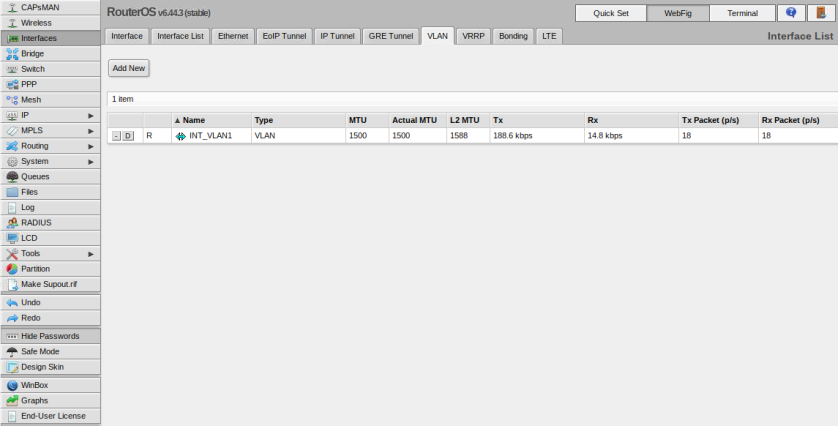I noticed that my Windows 10 VM kept becoming inaccessible after shutting down and powering up my lab. As part of the power down process, I was cutting power to the MikroTik CRS309 switch, which is the default gateway for the VMs in VLAN 1. After opening a console to the Windows VM I discovered that the network discovery feature was detecting a new network and prompting whether it was trusted. This discovery is based upon the MAC address of the default gateway – sure enough it seemed to be changing after each power up of the CRS309.
After doing some research it seems that this is expected behaviour. The bridge MAC is auto-selected based on one of the bridge ports at boot-up. Because of this, there is a good chance the MAC will change after each boot. If I left my switch up 24/7, this wouldn’t be a problem, but since I don’t, I need keep things consistent.
The MikroTik wiki mentions two options – admin-mac and auto-mac. These two can be used to force the bridge to use a static MAC address. I just selected the current auto-generated MAC to use for this purpose.
You can get the current bridge configuration using the following command:
[admin@MikroTik] > /interface bridge print
Flags: X - disabled, R - running
0 R name="bridge1" mtu=auto actual-mtu=9000 l2mtu=10218 arp=enabled arp-timeout=auto mac-address=4E:A4:50:F4:E7:1C protocol-mode=rstp fast-forward=yes igmp-snooping=no auto-mac=yes ageing-time=5m priority=0x8000 max-message-age=20s
forward-delay=15s transmit-hold-count=6 vlan-filtering=yes ether-type=0x8100 pvid=1 frame-types=admit-all ingress-filtering=no dhcp-snooping=no
I then forced a specific MAC address using the following:
[admin@MikroTik] > /interface bridge set bridge1 admin-mac=4e:a4:50:f4:e7:1C auto-mac=no
And you can validate that the change stuck using the print command again:
[admin@MikroTik] > /interface bridge print
Flags: X - disabled, R - running
0 R name="bridge1" mtu=auto actual-mtu=9000 l2mtu=10218 arp=enabled arp-timeout=auto mac-address=4E:A4:50:F4:E7:1C protocol-mode=rstp fast-forward=yes igmp-snooping=no auto-mac=no admin-mac=4E:A4:50:F4:E7:1C ageing-time=5m
priority=0x8000 max-message-age=20s forward-delay=15s transmit-hold-count=6 vlan-filtering=yes ether-type=0x8100 pvid=1 frame-types=admit-all ingress-filtering=no dhcp-snooping=no
[admin@MikroTik] >
This seemed to have the desired effect. The MAC address is now consistent at every boot up!



